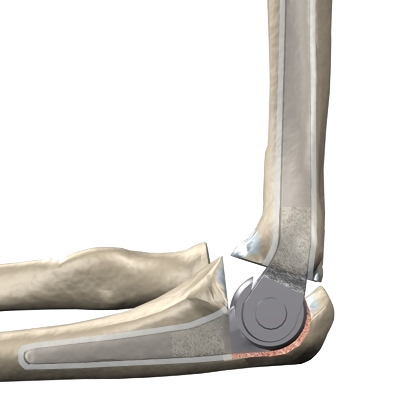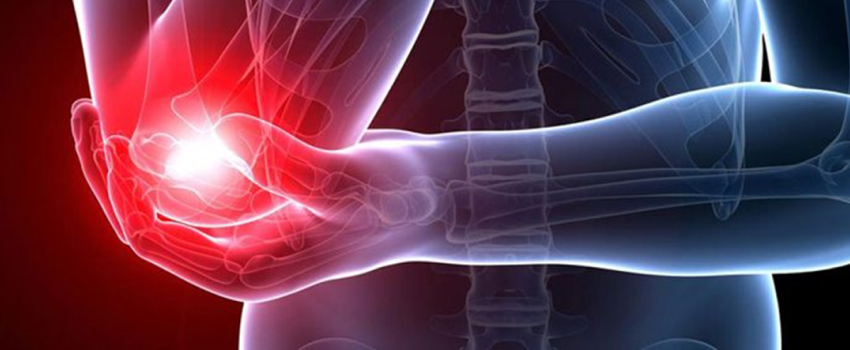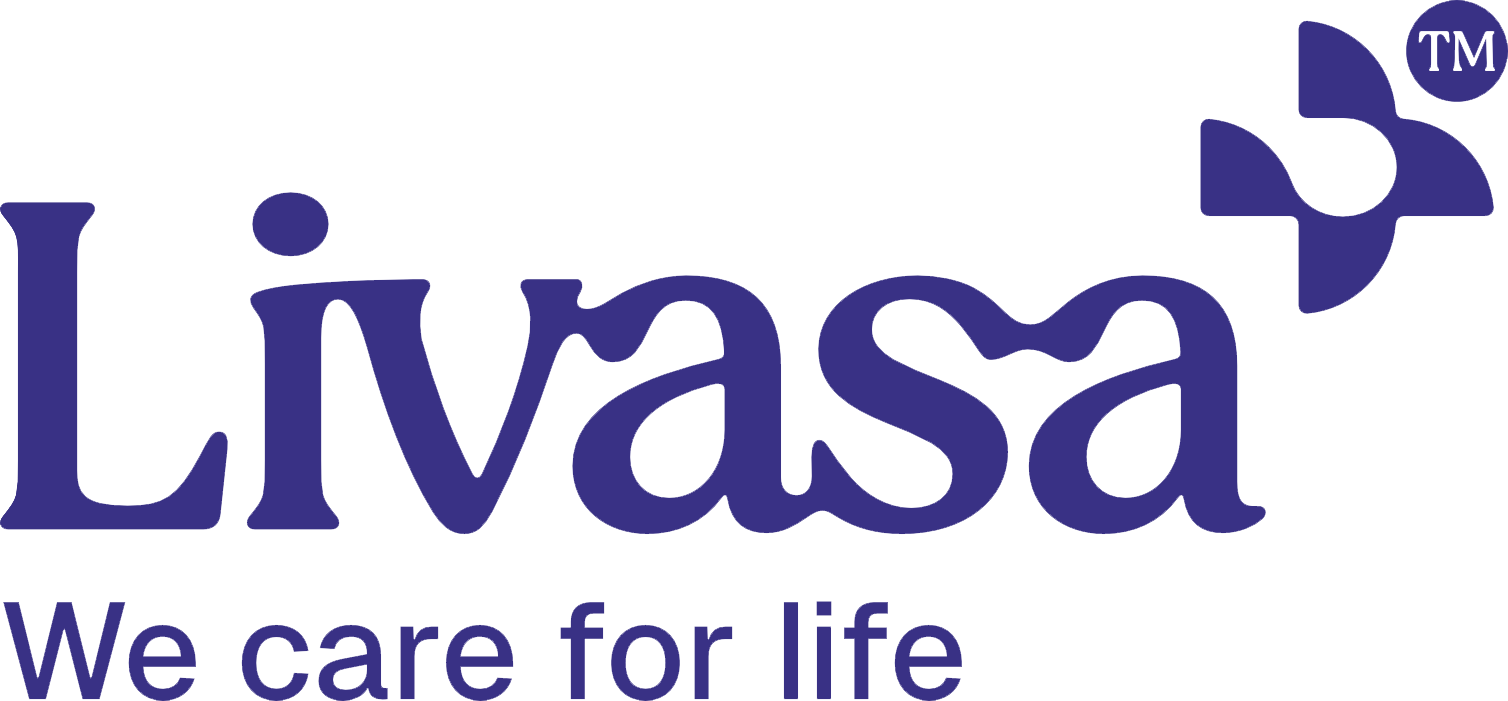The surfaces of the bones where they meet to form the elbow joint are covered with articular cartilage, a smooth substance that protects the bones and enables them to move easily.
A thin, smooth tissue called the synovial membrane covers all remaining surfaces inside the elbow joint. In a healthy elbow, this membrane makes a small amount of fluid that lubricates the cartilage and eliminates almost any friction as you bend and rotate your arm.
The elbow is a hinge joint made up of three bones:
- The humerus (upper arm bone)
- The ulna (forearm bone)
- The radius (forearm bone)

The surfaces of the bones where they meet to form the elbow joint are covered with articular cartilage, a smooth substance that protects the bones and enables them to move easily.
A thin, smooth tissue called the synovial membrane covers all remaining surfaces inside the elbow joint. In a healthy elbow, this membrane makes a small amount of fluid that lubricates the cartilage and eliminates almost any friction as you bend and rotate your arm.
Muscles, ligaments, and tendons hold the elbow joint together
Elbow joint replacement (also called elbow arthroplasty) can effectively treat the problems caused by arthritis of the elbow. The procedure is also becoming more widely used in aging adults to replace joints damaged by fractures.
The artificial elbow is considered successful by more than 90 percent of patients who have elbow joint replacement.
Indications
- Rheumatoid arthritis (RA)
- Primary osteoarthritis (advanced)
- Un-reconstructable Fracture
- Chronic instability
Preparing for Surgery

As with all surgeries, there are a number of things that the hospital will ask you to do to contribute to the success of the operation.
- Choose the right doctor
- Understand the procedure well -educate yourself
- Keep all your past medical records handy and assemble all the documents and other things required on admission, during the stay in the hospital and for discharge.
- Pre-operative fitness tests are done, medical clearance is obtained (sugar levels and BP is maintained in normal range),a few medications like blood thinners are generally stopped before surgery.
- If you have any questions or concerns, ask your doctor or hospital staff.
Your doctor may want you to meet the Physical Therapist (PT) before surgery
Home Planning
Making simple changes in your home before surgery can make your recovery period easier.
For the first several weeks after your surgery, it will be hard to reach high shelves and cupboards. Before your surgery, be sure to go through your home and place any items you may need afterward on low shelves.
Surgery
In most total elbow replacement surgeries, general anesthesia is preferred.
In total elbow replacement surgery, the damaged parts of the humerus and ulna are replaced with artificial components.
Type of implant
Linked/Coupled Implant

The implant is the physical linking of the humeral and ulnar components at the time of surgery in order to prevent dislocation episodes. Newer-designed implants allow a decent range of motion at the elbow and do not wear out fast. These humeral and ulnar implants are made of titanium/chrome cobalt alloy fixed together with an axis pin and have to be fixed in bone using bone cement.
Example of implant used to replace the elbow joint:
- Coonrad-Morrey Linked Semiconstrained Elbow Arthroplasty
- Linked implants ensure joint stability, even in the presence of severe bone loss or ligamentous insufficiency which allows more reliable restoration of elbow motion.
PHYSIOTHERAPY PROTOCOL
1-4 weeks
Gentle strengthening exercises for the muscles around the elbow, hand, and shoulder are recommended.
Physiotherapy will include:
- Cryotherapy (Ice)
- Use of sling when out and about for protection (not necessary all the time)
- Passive range of movement exercises for elbow and wrist (bending, straightening, twisting)
- Progression to active range of movement exercises
- Stretching exercises to increase flexibility
5-8 weeks
- Active Range of movement exercises (bending, straightening, and twisting elbow joint)
- Strengthening, stretching, and range of movement exercises for shoulder
Full recovery after total elbow replacement may take up to 1 to 3 months.
The majority of patients have experienced an improved quality of life after total elbow replacement surgery. They experience less pain, improved motion and strength, and better function. The success and rate of recovery highly depend on your commitment and adherence to the comprehensive physiotherapy program apart from a good surgical procedure.















